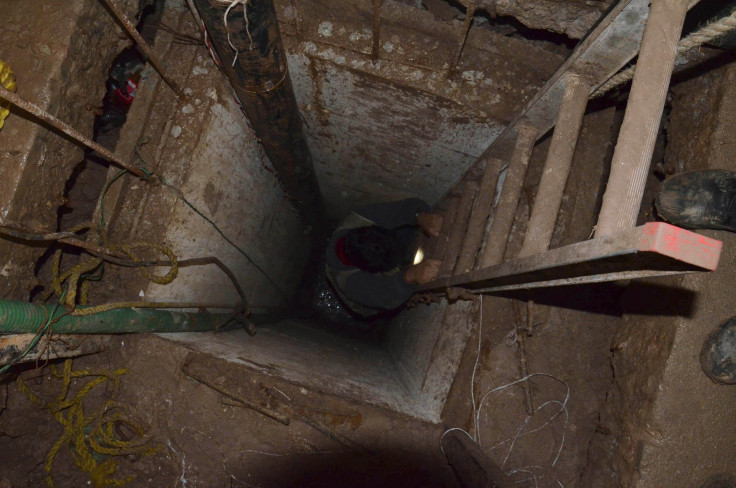
A team of San Diego border and drug enforcement authorities announced on Thursday the discovery of what they called a "just completed, highly sophisticated" tunnel connecting San Diego with the US-Mexico border city of Tijuana. Authorities reportedly seized more than 8 tons of marijuana and 325 pounds of cocaine and arrested three suspects in connection with the discovery, which was made on Wednesday. It is as yet unclear as to whether or how many drug shipments may have passed through them undetected.
The Associated Press wrote that the drug smugglers' tunnel linked warehouses in Tijuana with others in San Diego's Otay Mesa industrial area, and that it had been equipped with electricity, ventilation and a rail system. It's the eighth major tunnel to be uncovered in San Diego since 2006, when the Sinaloa cartel first solidified its hold on that plaza, or piece of smuggling turf. ICE agents told the AP that it was the first such tunnel in San Diego dedicated to the smuggling of cocaine.
Marijuana is by far the most commonly trafficked drug along the US-Mexico border. A June 2013 study from the Center for Investigative Reporting based on Border Patrol data found that more than 17 million pounds of it were seized by agents at checkpoints and stations along the border between 2005 and 2011 - more than the quantity of seized cocaine, meth, and heroin combined. And both because of the proximity of San Diego and Tijuana, the abundance of what the AP calls "vast underground drainage canals", and the soft, clay-like soil, the section of the border on which they lie is one of the most popular ones for smugglers.
On two separate occasions in the past two years, according to the AP, Tijuana-San Diego border authorities seized dozens of tons of marijuana from tunnels that were quite elaborate in their own right. In Nov. 2011, a 600-yard tunnel was found to be equipped with electric rail cars, lighting and ventilation and with wooden planks lining the floor, while on Thanksgiving 2010, a 700-yard passage with rail tracks stretched from two San Diego warehouses to the kitchen of a Tijuana home. Since 2008, more than 75 underground passageways have been discovered by authorities, the majority of them dedicated to marijuana smuggling, according to the AP. Cartel members have turned increasingly to ultralight aircraft -- which buzz over the border, drop off drugs and whizz back across onto the Mexican side before border authorities can act - as well as fishing boats and tunnels, as US border security has ramped up.
RELATED: How Do Drug Dealers Select 'Blind Drug Mules'?
© 2025 Latin Times. All rights reserved. Do not reproduce without permission.




